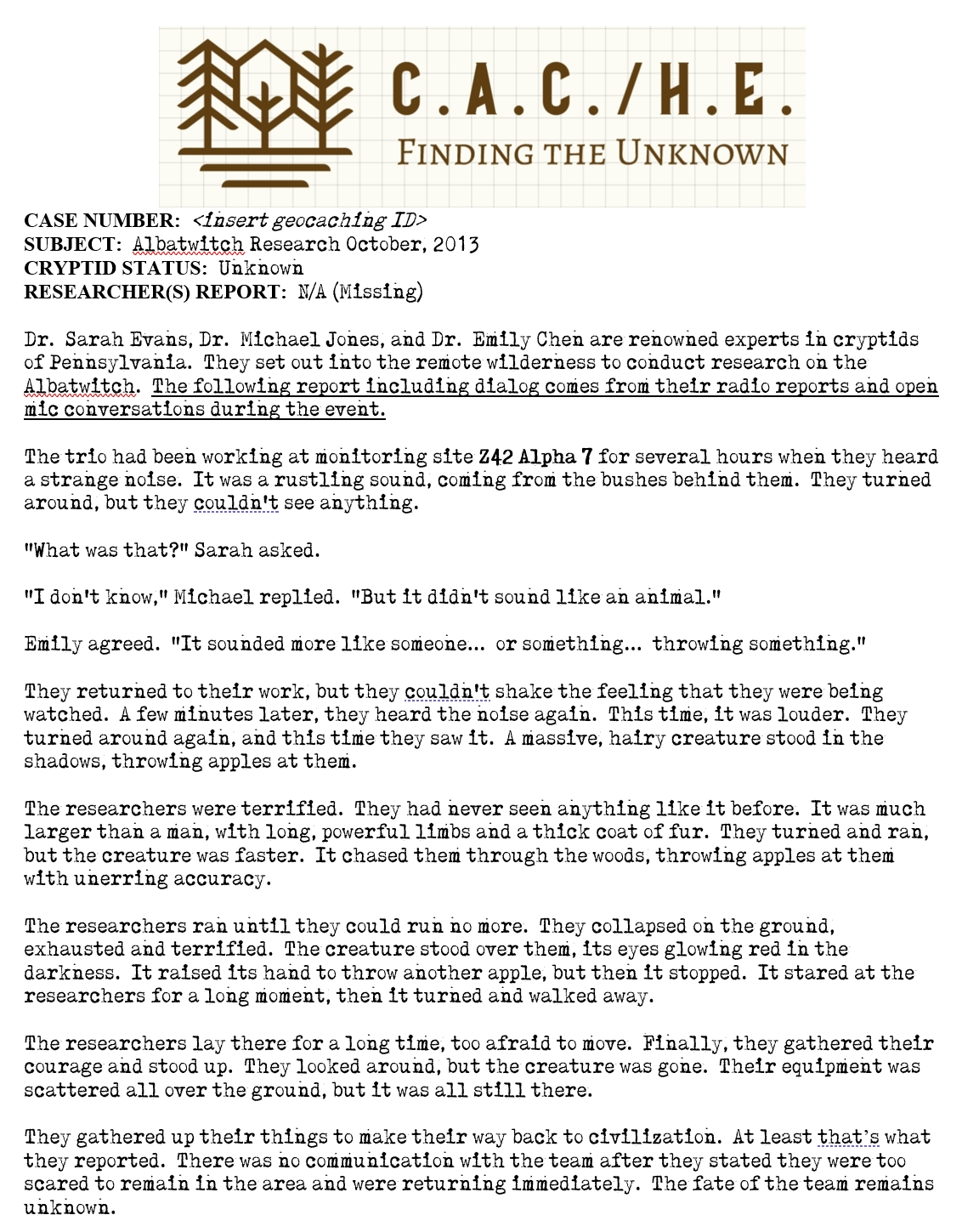One way to have an engaging cache is to put the cacher into a story. It doesn’t need to be believable, but it should be something they can imagine. This helps them to think about your puzzle in the way you intended.
For my sound based gadget cache, I want to simulate radio communication between the cacher and some kind of control or home base. This could be a spy story, about alien abduction, or exploring a new planet. The story needs to explain:
WHERE - Why the cacher is at the gadget location (in this case in the woods).
WHY - Why there is a communications device at that location.
HOW - What the cacher must do to solve the puzzle.
Since October is the traditional time to talk about the Albatwitch, I decided to use that creature as our mystery. There are other stories about Bigfoot, but I had not seen an Albatwitch cache yet. Just in case you haven’t heard of the Albatwitch, it is a cryptid said to inhabit Pennsylvania.
The cacher is part of a recovery team looking for missing researchers and the remains of their research station. The researchers were scattered by barrages of apples from the Albatwitch, but never returned from their expedition. Finding their equipment will recover the sensor data and logs about the team’s encounter. I created the research society Computerized Analysis of Cryptid/Human Encounters, or C.A.C./H.E., and made up the report of the lost researchers.
On the cache page I will explain that the cacher must find the equipment, power it on, and communicate with the research base to calibrate the equipment. Its readings were all taken without proper location settings and would be useless without this step.
Arriving at the gadget cache, the finder will discover the researcher’s data acquisition system and communications center. This is a box requiring batteries. Opening the locked sample chamber will require a few steps. The instructions can be on the cache page and/or in the box itself as a torn instruction sheet.
At power on the cache should indicate it is energized but not ready for proper operation.
Using available info, the finder needs to tune the radio. This provides a greeting message and the first set of instructions.
The finder executes the command and enters info to prove completion.
This sequence is repeated two more times, for a total of three interactions to fix coordinates.
The device allows access to the log.
I am not planning anything elaborate, but this should be out of the ordinary enough to entertain cachers who attempt it.
What comes after the story idea? In the next installment I will talk about the cache’s operator interface – how the cache looks and how the finder interacts with it. I will discuss some alternate component choices to vary the gadget’s complexity. The article will end by discussing the logic flow of the gadget. For homework, you can look up “state machine”.
If you have ideas about building the cryptid data collection machine, leave them in the comments.
Please consider subscribing so I know you’re reading my work.
I’ll leave you with a newspaper clipping from the Lancaster New Era printed July 14, 1926. This is an early description of an Albatwitch hunt.





